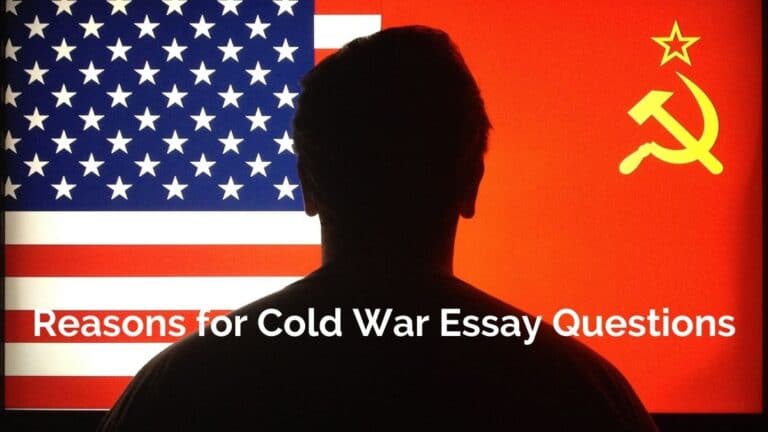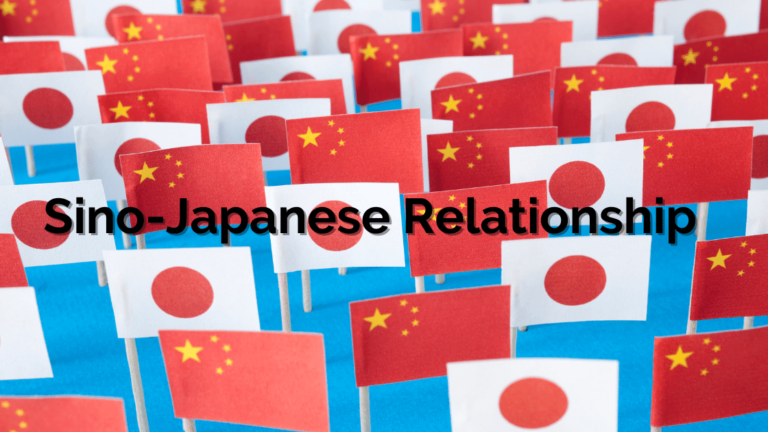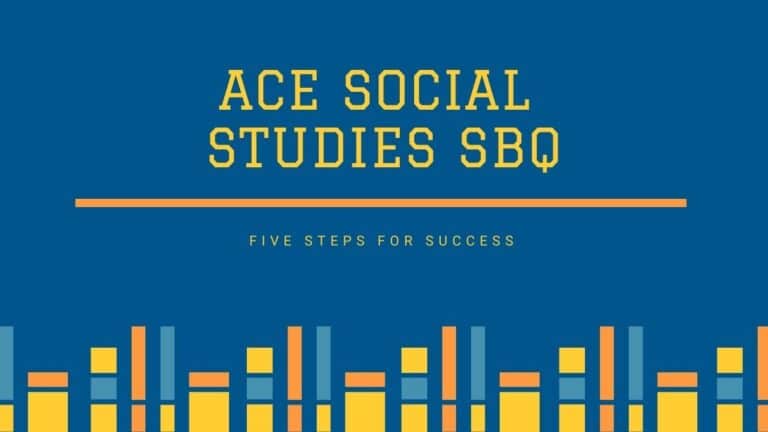Stalin’s Rule: 5 SEQ Samples
The impact of Stalin’s rule is another common Structured Essay Question for O level History. Here are some sample essays to help students score well if an essay question comes out for Stalin’s rule. To download the pdf, click below.
1. Explain two impacts of Stalin’s rule that did not benefit the Russians.
(P) An impact of Stalin’s rule that did not benefit the Russians was a fall in the Soviet peoples’ standard of living.
(E) Stalin’s Five Year Plans caused more people to move to the cities to work in factories. The increasing population made the shortage of housing an even more significant problem. As a result, many workers lived in cramped living conditions, often without running water or sanitation. In addition, the Five Year Plans pushed workers very hard to achieve the ambitious targets as determined by the communist leadership.
(E) This meant that workers often worked long hours, with little time off, under poor conditions. As a result, the workers were overworked and not fairly paid for their efforts.
(L) Therefore, the policies of Stalin’s rule resulted in much physical suffering for ordinary Soviet workers.
(P) Another impact of Stalin’s rule that did not benefit the Russians was the culture of fear.
(E) Stalin had secret police that monitored ordinary Russians. They had informers everywhere, and the slightest indication of anti-Stalin sentiments could warrant an arrest. People also knew that they were constantly watched and judged by Stalin’s officials.
(E) If they stood out for the wrong reasons or upset officials, it more challenging to apply for housing, jobs or holidays. They could even be sent to forced labour camps or even killed. Therefore, the Soviet people lived in constant fear for their lives and those of their loved ones.
(L) They had to endure this mental torture daily, which was a negative social impact.
2. “The Five-Year Plans were a failure for the Russian people.” How far do you agree with this statement? Explain your answer.
(P) I agree that the Five-Year Plans were a failure for the Russian people.
(E) The Russian people were worse off in the short term. People’s pay was low; essential goods were in short supply, and the standard of living dropped. The Five-Year Plans concentrated on heavy industry, and there was no focus on consumer goods. Clothing was in short supply, so unsuitable clothes and inadequate housing heating made the people’s lives very miserable during the winters. Workers were treated harshly in factories, mines and construction projects.
(E) If the workers did not meet their work targets, they might lose their jobs, housing and food ration cards. Those who exceeded their targets were not popular with their co-workers as their targets were used as an excuse to increase other workers’ targets. As there were no proper tools and equipment, most could not meet targets, let alone exceed them.
(L) Hence, the Five-Year Plans were a failure for the Russian people.
(P) No, I disagree that the Five Year Plans were a failure for the Russian people. It was a success.
(E) Stalin implemented the Five-Year Plans to address the Soviet agricultural system and industry problems to enable Russia to become a developed industrial country that could compete against the West. Under Stalin, the GOSPLAN produced a series of Five-Year Plans which set targets for industrial production, power supply and transport. In addition, Stalin carried out three Five-Year Plans between 1928 and 1941,
(E) As a result of the Plans, old industrial areas were re-developed, new industrial towns sprang up, and within ten years, the USSR had become a critical industrial power.
(L) Hence, Stalin made it possible for an industrially backward USSR to emerge as a great industrial power to compete against the West.
(J) On the whole, Five Year Plans achieved its aims of modernising Russia. Short of the intensity and massive effort of the plans, Russia would not catch up with the West in such a short time. In the long term, it was a success as it enabled USSR to build up its war capacity to fight and defeat the Germans during World War II. Hence, the Five Year Plans were not a failure for the Russian people.
3. “Stalin’s rule of the Soviet Union was characterised by the use of fear and terror.” How far do you agree with this statement? Explain your answer.
(P) Yes, I agree that Stalin ruled the Soviet Union through the use of fear and terror.
(E) Fear became an aspect of everyday life in the Soviet Union under Stalin’s rule. The secret police had informers everywhere, and the slightest indication of anti-Stalin feelings could warrant an arrest. People also knew they were constantly watched and judged by Stalin’s officials. They could fall victim to the secret police and be sent to forced labour camps or even killed. Once arrested by the secret police, they were questioned and forced to snitch on their friends and family who voiced opposition against Stalin. Peasants, factory workers and intellectuals such as scientists, teachers and writers were arrested to prevent them from organising opposition to Stalin’s rule. As a result, many were either killed or sent to forced labour camps.
(E) Thus, this would ensure that no one dared to oppose him. People interned in concentration camps were made to do forced labour, tortured or executed. Stalin became extremely powerful due to the fear and terror he instilled in the people as nobody dared to oppose him because of the atmosphere of fear in the country. These acts could control the people living in the Soviet Union into submission and silence opposition, thus allowing Stalin to rule over the Soviet Union citizens.
(L) Hence, I agree with the statement that Stalin led the Soviet Union through the use of fear and terror.
(P) I cannot entirely agree with the statement because Stalin ruled the Soviet Union through the use of propaganda.
(E) Stalin used propaganda extensively to build up his profile as the rightful successor to Lenin. Artists praised the leader in films, books, posters, paintings and musicals. However, Stalin also carefully controlled his public image. Stalin used propaganda to influence the people with only a positive image of himself, forcing everyone to support him. As a result, they did not have a complete picture of the harm he brought to the Soviet Union.
(E) For example, Stalin placed his pictures and propaganda posters everywhere. In addition, the achievements and successes of the Soviet Union were credited to his leadership. Furthermore, official literature discredited Stalin’s rivals. Thus, propaganda was one way that Stalin ruled the Soviet Union to boost Stalin’s power and status as the undisputed leader of the Soviet Union. At the same time, Propaganda thus made opposition against him impossible.
(L) Hence, I can’t entirely agree with the statement because Stalin ruled the Soviet Union through propaganda.
(J) In conclusion, I’m afraid I disagree that under Stalin’s rule, the Soviet Union was characterised by fear and terror as propaganda was another method he deployed to lead the Soviet Union. It is essential to acknowledge that Stalin used fear and terror to help him silence opposition and control the Soviet Union. As a result, Stalin ruled the Soviet Union with minimal opposition so that he was able to achieve his ambitions as the supreme leader of the Soviet Union.
With the extensive propaganda that helped to mask the sufferings and elevate Stalin’s status and popularity within the Soviet Union, Stalin was also able to influence the thoughts of Soviet citizens, gaining popularity and supporting his policies to rule the Soviet Union. Together, these two methods enabled Stalin to control the Soviet Union effectively. Hence, I cannot entirely agree that Stalin ruled the Soviet Union through fear and terror. Stalin also used propaganda to gain popularity and led the Soviet Union successfully with these two methods.
4. “Stalin’s rule brought mainly harm to the Soviet Union.” How far do you agree with this statement? Explain your answer.
(P) I agree that Stalin’s rule brought harm to the Soviet Union because it resulted in immense suffering and deaths of the Soviet people.
(E) For example, Stalin eliminated those who rejected the policy of collectivisation. Many kulaks refused to surrender their farms. When forced to do so, the kulaks burned their farmhouses and grain stocks and slaughtered their livestock to show their defiance instead of sacrificing their farms, grains and livestock.
(E) Consequently, Stalin decided to eliminate the kulaks. Millions of kulaks were killed, deported to labour camps or allowed to starve to death.
(L) As a result of Stalin’s harsh actions against the kulak, severe famine happened in the Soviet Union from 1932-1933. As many as 10 million peasants died of starvation as a result of the famine.
(P) I also agree that Stalin’s rule brought harm to the Soviet Union because it led to a decline in living standards for the people.
(E) Stalin focused on developing the heavy industries under his Five-Year Plans. Stalin channelled minimal resources to the production of consumer goods. Stalin’s focus on heavy industry and neglect of consumer goods meant a steady fall in the standard of living.
(E) The workers were also pushed very hard to achieve the targets set by the Plans. They worked long hours, with little time off, under poor conditions. Those who failed to meet the targets were sent to gulags in Siberia to prisons to work at government projects where they perished under harsh working conditions.
(L) Thus, Stalin’s policies significantly harmed the people because their welfare was not being cared for, resulting in great suffering.
(P) However, Stalin’s rule also brought about some benefits to the Soviet Union.
(E) For example, Stalin made school attendance compulsory. Every child was entitled to at least nine years of free education. As a result, by 1939, the males’ literacy rate had risen to 94% from 40%! Also, the rights of women increased during Stalin’s rule. He encouraged them to enter the workforce and become productive members of the economy. He legalised abortion and divorce to have more control over their lives without interference from their husbands.
(E) Hence Stalin’s rule brought about benefits because certain groups of people such as women and children became better.
(L) Hence, Stalin’s rule did bring about some good.
(J) In conclusion, I agree that Stalin’s rule brought mainly harm to the Soviet Union. Although he did improve the lives of some groups of people, millions suffered and even perished under his rule. Hence, when one thinks of the human cost incurred during his administration and the extent of human suffering he caused, it is not enough to say that the benefits to a select group of people outweigh the harm to even more people.
5. “Widespread famine was the most terrible consequence of Stalin’s rule.” How far do you agree with this statement? Explain your answer.
(P) I agree with the statement that widespread famine was the most terrible consequence of Stalin’s rule.
(E) Stalin introduced collectivisation to turn the Soviet Union into a modernised country. Under collectivisation, the state-owned the land, and the peasants worked for a fixed income. There was no longer private ownership. The kulaks were unhappy and defied the state by slaughtering their livestock and burning their grains instead of giving them up to the collective farms.
(E) As a result, there was unrest in the countryside and natural disasters, which caused a severe famine in 1932-1933, leading to the deaths of about 10 million people. Stalin’s officials nevertheless sized crops in the countryside to feed the workers, and they continued to sell produce to other countries during those years.
(L) Hence, I’m afraid I disagree with the statement that widespread famine was the most terrible consequence of Stalin’s rule.
(P) There were other significant consequences of Stalin’s rule, such as the climate of fear.
(E) Stalin eliminated many of his political opponents and others suspected of disloyalty through a series of purges, also known as the Great Terror. Stalin put his most important political rivals in ‘show trials’. Many, including former allies, confessed to crimes they had not committed, often after torture or threats to their families. The trials were filmed and shown to others as a deterrent. The secret police (NKVD) arrested, questioned and forced people to inform against their friends and family who voiced opposition against Stalin. Many were either killed or sent to forced labour camps.
(E) As a result, Stalin became extremely powerful. Nobody dared to oppose or challenge him due to the prevailing atmosphere of fear. People became very suspicious of each other, and few dared to stand or speak out when something went wrong. People were encouraged to inform their friends, neighbours and family. The secret police would often take people away from their homes in the middle of the night or early morning hours. The people of the USSR had no form of security and were at the mercy of the state and Stalin’s secret police.
(L) Thus, an essential consequence of Stalin’s rule was the climate of fear.
(J) In conclusion, in addition to widespread famine, people also lived in constant fear in the Soviet Union. However, widespread famine would be the most terrible consequence of Stalin’s regime as the famine wiped out a vast population of Russians, especially those in the countryside. Due to Stalin’s agricultural policies, many of the kulaks were unwilling to work in collective farms and hand over their crops.
Thus, burning their produce led to a significant decrease in food to feed the Russians. Along with the unrest in the countryside, natural disasters eventually led to a severe famine, killing many Russians. Though Stalin’s rule of terror may have resulted in the mass execution of intellectuals and skilled workers, the number of deaths was not as massive as the peasants that died of starvation due to extreme food shortage.
Conclusion
I hope that you have found these sample Structured Essay Questions useful. For more information about Stalin’s rule, check out this resource.
You can also download the sample SEQ pdf for Stalin’s rule below.
The posts for other chapters are found below.
- Treaty of Versailles
- League of Nations
- Rise of Stalin
- Rise of Hitler
- Hitler’s Rule
- Reasons for World War II in Europe
- Reasons for the Defeat of Germany
- Reasons for World War II in Asia-Pacific
- Reasons for the Defeat of Japan
- Reasons for the Cold War
- Korean War
- Cuban Missile Crisis
- Reasons for the End of the Cold War

Critical Thought English & Humanities is your best resource for English, English Literature, Social Studies, Geography and History.
My experience, proven methodology and unique blend of technology will help your child ace their exams.
If you have any questions, please contact us!







